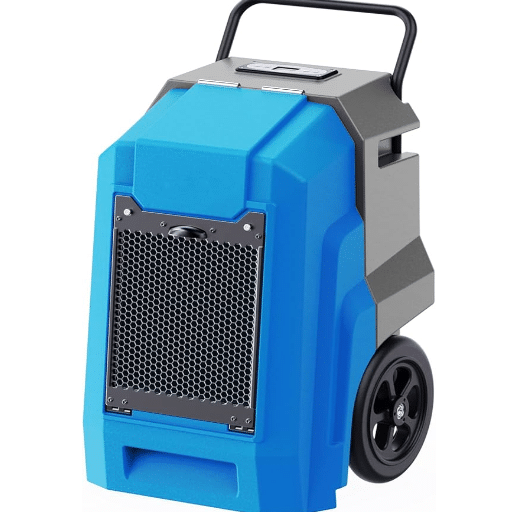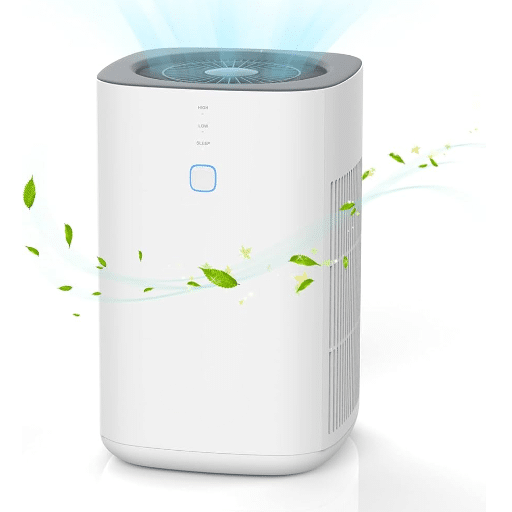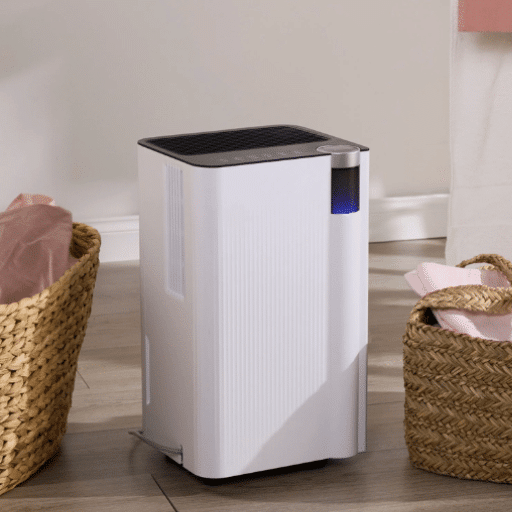When it comes to maintaining comfortable indoor air, both dehumidifiers and air conditioners play crucial roles. However, as energy efficiency becomes a top priority for homeowners, the question arises—between a dehumidifier and an air conditioner, which one uses less energy? This blog post dives into the mechanics, functionality, and energy consumption of these two appliances to help you make an informed decision. Whether you’re looking to reduce humidity levels, stay cool during heatwaves, or simply cut down on utility bills, understanding the differences between a dehumidifier and an air conditioner is key. Read on to discover how these devices compare in terms of energy usage and their impact on both your home and the environment.
How Does an Air Conditioner Work?
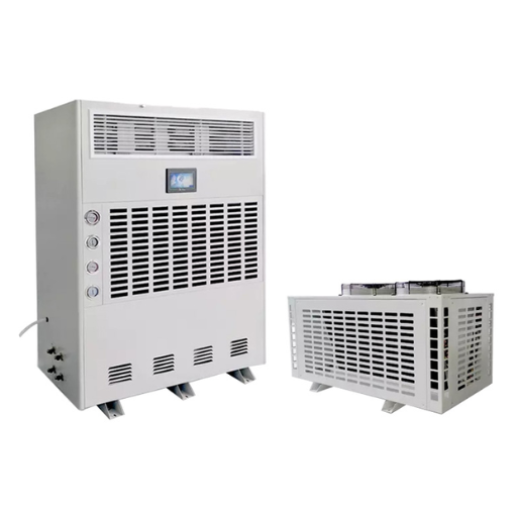
Air conditioners create a more pleasant environment by eliminating moisture and heat from the air. They cool a space using a refrigeration cycle which involves the compressor, evaporator, and condenser. The process begins when the warm air from indoors is sucked into the unit and passed through coils with a liquid refrigerant. The refrigerant then absorbs the heat and changes state into gas. That gas then transfers back to the outdoor unit where the outdoor condenser releases that heat outside and turns the gas back to liquid refrigerant. In the end, the cooled air is blown back into the room.
Understanding the Air Conditioning System
An air conditioning system is composed of several key components that work in harmony to regulate indoor temperature and humidity. These include the compressor, condenser, evaporator, expansion valve, and refrigerant. The compressor is often referred to as the heart of the system, as it pressurizes the refrigerant and initiates the heat exchange process. The condenser is responsible for releasing the absorbed heat outside the building, while the evaporator absorbs heat from the indoor air. The expansion valve regulates the refrigerant flow between the condenser and evaporator, ensuring optimal cooling efficiency.
Modern air conditioning systems boast advanced technologies for improved energy efficiency. According to reports, newer models equipped with high Seasonal Energy Efficiency Ratio (SEER) ratings use up to 50% less energy than systems manufactured 20 years ago. Many units also incorporate smart controls, allowing users to optimize energy consumption by adjusting settings remotely through mobile apps or smart thermostats. Additionally, innovations like variable speed compressors and eco-friendly refrigerants contribute to better performance and reduced environmental impact.
Understanding these components and advancements highlights how air conditioners provide not only comfort but also cost-saving and environmentally conscious solutions for today’s households and businesses.
How Air Conditioners Work to Cool the Air
Air conditioners operate based on a delicate mechanical and thermodynamic process designed to remove heat from indoor spaces. The core principle is centered around a refrigeration cycle, which includes compression, condensation, expansion, and evaporation. These steps are carried out through key components such as the compressor, condenser coil, evaporator coil, and refrigerant.
The process begins with the compressor, where the refrigerant gas is pressurized and converted into a high-temperature, high-pressure state. This heated gas then flows through the condenser coil, typically located outside your home, where it releases heat to the external environment and condenses into a high-pressure liquid. Fans assist in expelling the heat efficiently.
The high-pressure liquid is then routed to the expansion valve, where it undergoes a rapid reduction in pressure, causing a significant drop in temperature. The cold refrigerant, now in a low-pressure liquid form, enters the evaporator coil, located inside your home. The warm indoor air is drawn over the evaporator coil by the system’s fan. Here, the refrigerant absorbs the air’s heat, effectively cooling it. The cooled air is then circulated back into the living space while the refrigerant, now warmed and in gas form again, returns to the compressor to repeat the cycle.
Modern air conditioners achieve high efficiency and enhanced cooling performance through advanced technologies. For instance, variable-speed compressors adjust cooling output based on the temperature requirements, reducing energy consumption significantly. According to studies, these systems can offer energy savings of up to 30% compared to traditional single-speed models. Additionally, the integration of smart sensors within many modern units enables precise temperature adjustments and optimal airflow distribution, further enhancing comfort while reducing utility costs.
The use of eco-friendly refrigerants, like R-32, has also become a major development in the industry. These refrigerants have a lower global warming potential (GWP) compared to older chemicals like R-410A, contributing to a more sustainable future. Combined with advancements in insulation and duct design, these technologies ensure that air conditioners remain not only effective but also environmentally responsible. Understanding how these systems function gives new appreciation for their intricate design, highlighting their role in modern living.
Factors Affecting Energy Consumption of Air Conditioners
Several key factors contribute to the energy consumption of air conditioners. Understanding these factors can help users optimize their systems for efficiency and cost-effectiveness.
- Size of the Unit
The size of an air conditioning unit must match the cooling requirements of the space. Units that are too small will struggle to cool efficiently, running longer and consuming more energy. Conversely, oversized units cycle on and off frequently, wasting energy and reducing efficiency.
- Outdoor Temperature
The climate and ambient temperature directly affect energy consumption. During extremely hot days, air conditioners need to work harder to maintain the desired indoor temperature, drawing more power in the process. For example, studies show that energy usage can increase by 3% to 5% for every degree Fahrenheit the outdoor temperature rises.
- Thermostat Settings
The temperature settings on a thermostat significantly influence energy use. Lowering the thermostat even by a few degrees can lead to a marked increase in energy consumption. Setting the thermostat to an energy-saving temperature, such as 78°F (26°C) when cooling, can reduce overall energy demand.
- Maintenance and Cleanliness
Dirty filters, clogged vents, or poorly maintained components can inhibit airflow and force the system to consume more energy. Routine maintenance, such as cleaning or replacing filters every 1-3 months, can improve efficiency by up to 15%.
- Insulation Quality
Homes or buildings with inadequate insulation lose cooled air quickly, requiring the air conditioner to run longer to maintain the indoor temperature. High-quality insulation in walls, ceilings, and windows helps minimize this problem and reduce energy waste.
- Age and Efficiency of the System
Older air conditioning systems tend to use more energy than newer, energy-efficient models. Modern units with high SEER (Seasonal Energy Efficiency Ratio) ratings can save up to 30%-50% in energy consumption compared to systems that are 10-15 years old.
- Usage Patterns
The frequency and duration of air conditioner use also greatly affect energy consumption. Running the system continuously or at full capacity without breaks increases energy costs over time. Using smart thermostats or programmable timers can help manage usage more efficiently.
- Ductwork Condition
Leaks, holes, or gaps in ductwork can lead to a loss of up to 30% of the cooled air in a system, according to U.S. Department of Energy statistics. Sealed and well-maintained ductwork is essential for minimizing energy loss.
By considering these factors, users can make informed decisions to enhance the performance and efficiency of their air conditioning systems, ultimately reducing energy costs and supporting a more sustainable energy grid.
How Does a Dehumidifier Work?
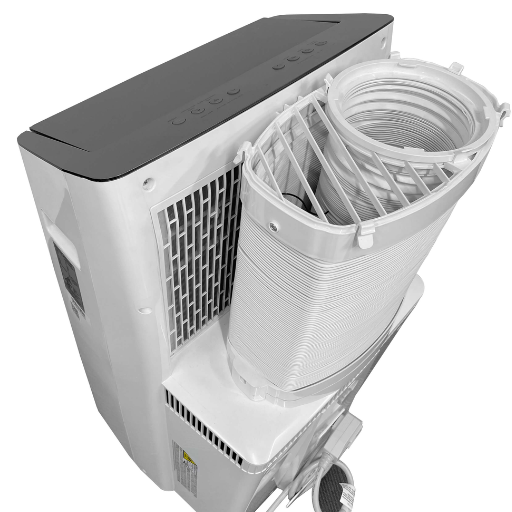
A dehumidifier works by removing excess moisture from the air to create a more comfortable and healthier indoor environment. Air is drawn into the dehumidifier using a fan and passed over cold coils, where the moisture in the air condenses into water droplets. The water is collected in a tank or drained away, while the drier air is reheated and released back into the room. This process helps reduce humidity levels, preventing issues like mold, mildew, and dampness.
The Process of Dehumidification
Dehumidification technology has advanced significantly, offering efficient solutions to control indoor humidity levels. The process starts with the intake system, where air is drawn into the unit using a fan. Modern systems are designed to handle a wide range of air volumes, ensuring optimized performance for both small and large spaces.
The core mechanism involves cooling coils which are maintained at a temperature below the air’s dew point. When humid air comes into contact with these cold surfaces, the moisture condenses into liquid water. According to recent studies, many residential dehumidifiers can extract anywhere from 20 to 70 pints of water per day, depending on their capacity and environmental conditions. For reference, maintaining indoor humidity levels between 30% and 50% is often recommended for optimal comfort and health.
Collected water typically moves into a reservoir tank, and advanced models include automatic drainage systems for continuous operation. Additionally, some units feature energy-efficient designs, with Energy Star-rated models using 15% less energy than conventional alternatives, making them ideal for long-term usage.
Finally, the dehumidified air is reheated slightly to ensure it exits at a comfortable temperature. Modern dehumidifiers also incorporate smart technology, allowing users to monitor humidity levels in real time and adjust settings through mobile apps, ensuring precise control over indoor air quality.
How Dehumidifiers Work to Remove Moisture from the Air
Dehumidifiers function by extracting excess moisture from the air, maintaining a balanced and healthy humidity level. Most dehumidifiers utilize a refrigeration-based process to achieve this. First, a fan pulls in warm, moist air from the surrounding room and directs it over a set of cold evaporator coils. These coils cool the air below its dew point, causing the moisture in the air to condense into liquid form. The condensed water then collects in an internal reservoir or drains out through a hose, while the drier, reheated air is released back into the room.
Modern dehumidifiers are designed to operate efficiently. For instance, desiccant dehumidifiers use hygroscopic materials to absorb moisture directly, making them highly effective in colder environments where refrigerant-based models may lose efficiency. On average, standard dehumidifiers can remove anywhere from 20 to 70 pints of water per day, depending on their capacity and room conditions. For example, a 50-pint dehumidifier is typically suitable for areas between 1,000 and 2,500 square feet with moderate humidity.
Advanced technologies also enhance moisture removal precision. Many new models come equipped with built-in hygrometers and humidity level settings, allowing users to set their target humidity, often between 30% and 50%, as recommended by environmental health experts. Some units even feature smart home integration, enabling remote control and monitoring through smartphone apps, offering both convenience and customization for optimal indoor air quality management.
By efficiently removing excess humidity, dehumidifiers not only create a more comfortable living environment but also protect homes from common moisture-related issues such as mold, mildew, and structural damage. Their innovative designs ensure they remain an essential appliance for maintaining healthier, safer interiors.
Impact on Indoor Air Quality and Energy Efficiency
Dehumidifiers play a crucial role in improving indoor air quality by maintaining ideal humidity levels, typically between 30% and 50%. By reducing excess moisture in the air, they help minimize allergens such as dust mites and mold spores, creating a healthier environment for those with allergies or respiratory conditions. For example, studies have shown that limiting humidity levels can significantly decrease the proliferation of molds, which require at least 60% relative humidity to thrive.
When it comes to energy efficiency, modern dehumidifiers are designed with advanced features such as energy-saving modes, smart sensors, and automated programming. These enhancements adjust the appliance’s operation based on the current humidity levels, ensuring optimal functionality without unnecessary energy consumption. Some Energy Star-certified dehumidifiers, for instance, are reported to utilize nearly 15% less energy than standard models, translating to both lower utility costs and a reduction in environmental impact.
Additionally, by controlling indoor moisture, dehumidifiers contribute to the longevity and efficiency of HVAC systems. Excess humidity can force air conditioning units to work harder to maintain comfortable temperatures, leading to increased energy use and wear on the system. Integrating a dehumidifier not only complements the HVAC system but also reduces overall energy demand, promoting a more sustainable and cost-effective approach to indoor climate control.
Comparing Energy Consumption: Dehumidifier vs Air Conditioner
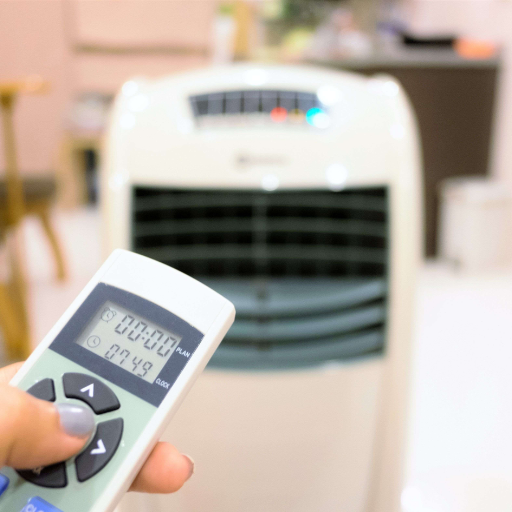
Dehumidifiers and air conditioners serve different purposes, but their energy consumption can vary depending on usage. Generally, dehumidifiers consume significantly less electricity compared to air conditioners when removing moisture from the air. Air conditioners not only dehumidify but also cool the space, resulting in higher energy use to power refrigeration processes. For strictly managing humidity levels, a dehumidifier is the more energy-efficient option. However, if cooling is also required, an air conditioner becomes necessary despite its higher energy costs. Choosing the right appliance depends on the specific needs of the environment and the desired balance between comfort and efficiency.
Which Uses Less Energy?
When comparing the energy consumption of air conditioners and dehumidifiers, the difference often depends on the specific use case and the size of the space. Generally, air conditioners consume significantly more energy than dehumidifiers since they perform dual tasks—cooling the air and removing humidity. On average, a typical air conditioner uses around 1,000 to 5,000 watts per hour depending on the model and size, while a standard dehumidifier can use between 300 to 700 watts per hour.
For example, if the goal is to lower the humidity in a 500-square-foot area, a dehumidifier would usually cost about 8 to 12 cents per hour to operate, based on standard electricity rates. An air conditioner performing the same task, along with lowering the temperature, might cost between 20 to 60 cents per hour. This makes dehumidifiers a far more energy-efficient choice when cooling isn’t a primary concern.
Modern advancements in energy-efficient appliances can help reduce this gap. High-efficiency air conditioners with Energy Star certification are designed to use up to 20% less energy compared to standard models, while newer dehumidifiers now come equipped with features like automatic shut-off and programmable settings to optimize usage. Understanding the specific requirements of your environment and investing in efficient appliances can further drive down energy consumption and long-term costs.
Factors Influencing Energy Use in Humid Climates
- Humidity Levels
High humidity levels can significantly increase energy consumption as air conditioning systems work harder to remove excess moisture from the air. According to the Department of Energy, humidity control can account for up to 30% of the total energy used by an HVAC system in humid regions.
- Quality of Insulation
Poor insulation allows warm, moist air to seep into indoor spaces, forcing cooling systems to work more intensely. Using high-performance insulation materials can reduce energy usage by up to 20%, as they help maintain stable indoor temperatures.
- Ventilation Efficiency
Inefficient ventilation systems can lead to poor air circulation and uneven cooling, increasing energy demand. Incorporating energy recovery ventilators (ERVs) can reduce energy usage by recycling cooled air while expelling stale, humid air.
- Appliance Performance
Older or poorly maintained appliances, such as air conditioners and dehumidifiers, consume significantly more energy compared to modern, energy-efficient models. Upgrading to appliances with advanced energy-saving technologies may lower energy costs by 10-30%, according to EPA estimates.
- Building Design and Orientation
The design and orientation of buildings can impact cooling efficiency. Buildings with large windows facing direct sunlight or dark exterior colors tend to absorb more heat, increasing cooling needs. Proper shading, light-colored roofing materials, and reflective coatings can minimize heat absorption and energy use.
- Local Climate Variability
Seasonal changes and unpredictable weather can influence energy consumption. For example, sudden heat waves or prolonged rainy periods can elevate indoor humidity, requiring additional cooling or dehumidifying efforts.
- Behavioral Patterns of Occupants
The way building occupants operate cooling devices can greatly affect energy use. Setting thermostats to unnecessarily low temperatures, frequent opening of windows in a cooled space, or failure to use ceiling fans to circulate air can all increase energy demand unnecessarily.
By proactively addressing these factors, energy consumption in humid climates can be reduced significantly, contributing to both lower utility bills and environmental conservation.
Choosing Between a Dehumidifier or an Air Conditioner for Energy Savings
Dehumidifiers are more energy-efficient for reducing humidity, while air conditioners are better for cooling and incidental humidity control.
| Key Point | Dehumidifier | Air Conditioner |
|---|---|---|
|
Function |
Removes moisture |
Cools air, reduces some humidity |
|
Energy Use |
Lower |
Higher |
|
Cost |
Lower upfront |
Higher upfront |
|
Humidity |
High reduction |
Moderate reduction |
|
Cooling |
No |
Yes |
|
Best Use |
Damp, mold-prone areas |
Hot, humid climates |
|
Maintenance |
Simple |
Complex |
|
Air Quality |
Mold prevention |
Allergen filtration |
How to Improve Energy Efficiency in Indoor Air Management?
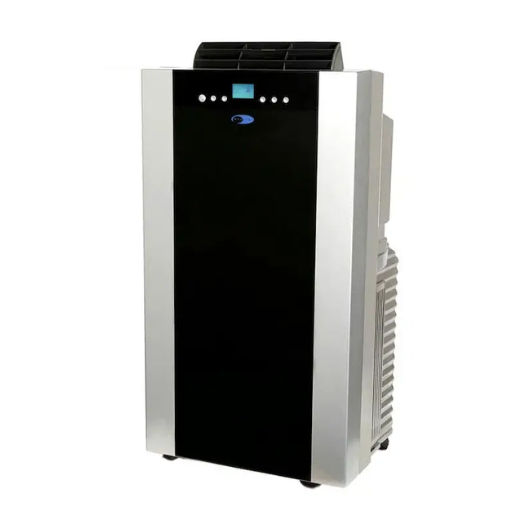
- Seal Air Leaks
Ensure windows, doors, and vents are sealed properly to prevent air leaks. This maintains desired indoor temperatures and reduces the strain on cooling or heating systems.
- Use Programmable Thermostats
A programmable thermostat can regulate temperatures efficiently by adjusting settings based on occupancy schedules, preventing unnecessary energy usage.
- Maintain HVAC Systems
Regularly clean or replace air filters and schedule maintenance for HVAC systems to ensure they operate at peak efficiency. Dirty systems consume more energy.
- Opt for Energy-Efficient Appliances
Upgrade to HVAC systems and appliances with high energy efficiency ratings, such as those certified by ENERGY STAR.
- Leverage Natural Ventilation
When possible, use natural ventilation to cool or freshen indoor air, especially during cooler parts of the day or year.
By implementing these simple yet effective strategies, energy consumption in indoor air management can be significantly reduced, lowering costs and minimizing environmental impact.
Tips to Reduce Energy Consumption with Dehumidifiers and Air Conditioners
- Choose Energy-Efficient Models
Opt for dehumidifiers and air conditioners with high energy efficiency ratings, such as those certified by ENERGY STAR. According to the U.S. Department of Energy, ENERGY STAR-certified air conditioners use up to 15% less energy than standard models, helping reduce electricity bills without sacrificing performance.
- Optimize Temperature Settings
Set your air conditioner to the highest comfortable temperature during warmer months. Each degree increase in temperature can save up to 3-5% on cooling costs. For example, setting the thermostat to 78°F instead of 72°F can achieve significant energy savings.
- Use a Programmable or Smart Thermostat
Incorporating a programmable or smart thermostat allows you to schedule temperature adjustments based on your daily routines. This reduces energy use during periods when cooling is not required, such as when you are away from home. Smart thermostats can save an average of $50 annually, according to energy efficiency studies.
- Ensure Proper Maintenance
Regularly clean or replace air filters in both dehumidifiers and air conditioners to maintain their efficiency. Clogged filters cause systems to work harder, consuming up to 15% more energy. Additionally, schedule annual inspections to ensure the units are functioning optimally.
- Seal and Insulate Your Space
Improper insulation and air leaks can cause cooled air to escape, forcing your system to work overtime. Sealing gaps around windows and doors and ensuring adequate insulation can lower cooling energy use by up to 20%, according to energy experts.
- Use Fans in Combination
Ceiling or portable fans can help distribute cooled air more effectively, allowing you to adjust the thermostat to higher temperatures without compromising comfort. This strategy can reduce energy consumption while maintaining a pleasant indoor environment.
- Limit Heat-Generating Activities
Avoid using heat-producing appliances like ovens, stoves, or dryers during peak cooling times. These appliances raise indoor temperatures, making cooling systems work harder. Scheduling such activities for the cooler parts of the day can minimize strain on your air conditioner.
- Utilize Dehumidifiers Efficiently
Dehumidifiers are most effective in areas with high humidity. Only use them when necessary and ensure that their capacity matches the size of the space being dehumidified to prevent excessive energy use. Place the unit in a central location for optimal air circulation.
By adopting these energy-saving tips, you can not only reduce your electricity bills but also contribute to a more sustainable and environmentally friendly lifestyle.
Maintaining Optimal Humidity Levels for Energy Efficient Homes
To maintain optimal humidity levels in my home efficiently, I focus on using dehumidifiers only when needed and ensure they are appropriately sized for the space. I also position them centrally for better air circulation and regularly clean and maintain the units to keep them working effectively. By taking these steps, I can manage humidity without wasting energy, helping me save on electricity costs and support a more sustainable home environment.
The Role of HVAC Systems in Improving Indoor Air Quality
HVAC systems play a crucial role in maintaining good indoor air quality in my home. By filtering out dust, allergens, and pollutants, they help create a healthier living environment. I ensure regular maintenance, such as cleaning or replacing filters and scheduling professional inspections, to keep the system running efficiently. This proactive approach not only enhances air quality but also extends the life of the HVAC system.
Reference Sources
-
Optimizing Energy Efficiency and Improved Dehumidification – A publication from the University of Central Florida’s energy research.
-
Advanced Dehumidification Analysis on Building America – A study hosted by Purdue University.
-
Dehumidification Performance of a Variable Speed Heat Pump – Research from the University of Texas at Tyler.
-
Efficient Dehumidifier Makes Air Conditioning a Breeze – Insights from the Pacific Northwest National Laboratory.
-
Dehumidification – NYSERDA – Information from the New York State Energy Research and Development Authority.
Frequently Asked Questions (FAQs)
Q: What is the main function of an air conditioner and a dehumidifier?
A: An air conditioner cools the air by removing heat and humidity, while a dehumidifier focuses on removing excess humidity from the air, making the environment more comfortable and improving air quality.
Q: How does the energy consumption of a dehumidifier compare to an air conditioner?
A: Generally, dehumidifiers are more energy-efficient than air conditioners. This is because air conditioners need to cool the air and remove humidity, which typically requires more energy. However, the actual energy consumption can vary depending on factors like the size of your home and the specific models used.
Q: Can using a dehumidifier be more cost-effective than running an air conditioner?
A: Yes, using a dehumidifier may be more cost-effective if the primary concern is reducing humidity rather than cooling the air. The cost of running a dehumidifier is typically lower than that of an air conditioner, especially when only dehumidifying is needed.
Q: Should I use a dehumidifier in conjunction with central air conditioning systems?
A: Using a dehumidifier alongside central air conditioning systems can enhance comfort and air quality by efficiently managing humidity levels. This combination can also reduce the workload on the air conditioner, potentially saving energy.
Q: What are the benefits of a portable air conditioner?
A: A portable air conditioner can cool the air and remove humidity in smaller spaces where central air isn’t available. They offer flexibility and can be moved to different areas as needed, although they may have higher energy consumption compared to fixed systems.
Q: How does the size of your home affect the choice between an air conditioner and a dehumidifier?
A: The size of your home influences the choice because larger spaces might require a central air conditioning system for effective cooling. In contrast, a whole-house dehumidifier might be needed to effectively manage humidity in a larger area.
Q: Can using a dehumidifier improve air quality?
A: Yes, running a dehumidifier can help improve air quality by reducing humidity levels, which can prevent mold growth and reduce allergens, creating a healthier living environment.
Q: Is it better to use a portable air conditioner or a dehumidifier in a small room?
A: In a small room, using a dehumidifier might be more energy-efficient if the goal is to reduce humidity without significantly cooling the space. A portable air conditioner would be suitable if cooling is also desired.
Q: How does humidity in the air affect comfort levels at home?
A: High humidity in the air can make temperatures feel warmer than they are and lead to discomfort. Reducing humidity levels through dehumidification can enhance comfort by making the air feel cooler and less sticky.
Q: Can the air conditioner and dehumidifier be used simultaneously?
A: Yes, using both simultaneously can be beneficial in very humid environments. The air conditioner may cool the air while the dehumidifier reduces excess humidity, providing optimal comfort and air quality.

